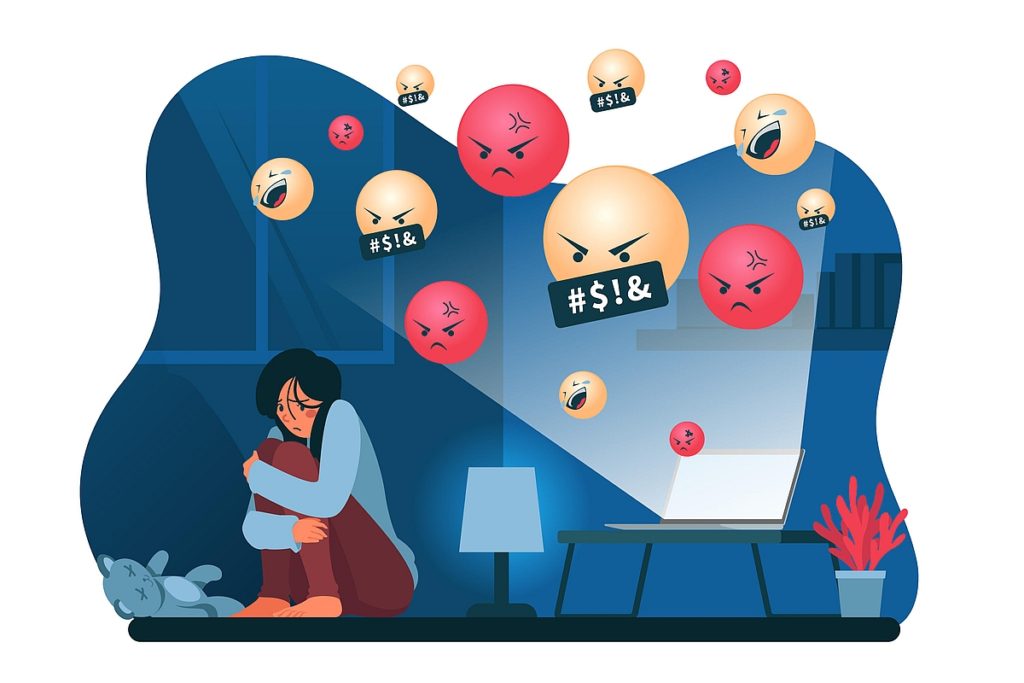
Protecting Your Child From Cyberbullying
While bullying is nothing new to tweens and teens, cyberbullying takes the hurt a step further by transacting the cruelty over the internet and cell phones. As a result, the events can either be more private (with disappearing posts) or more public (such as spreading rumors to a wide audience). Therefore, cyberbullying can take many forms, including:
- Sending a mean email, IM, or video to someone
- Posting mean things about someone on a website or app
- Making fun of someone in an online chat
- Doing mean things to someone’s character in an online world
- Creating a hostile environment in an online world or game
- Impersonating someone online
- Repeatedly texting someone to the point of harassment
- Directly threatening or intimidating someone online or in a text
- Starting rumors or spreading gossip online
- Taking photos or video of someone and sharing it without their consent

What should you do if this happens to your child?
If you have cyber insurance or homeowner’s insurance that covers cyberbullying, contact us immediately. By doing so, we can help you and your child through what can be a traumatic time.
1) Make sure your child is (and feels) safe.
Let your child know that you’re there for them, unconditionally, and that you want what they want – for the cyberbullying to stop.
2) Listen to your child.
Take the time to learn what happened and the context behind it. Don’t minimize the situation or make excuses for the aggressor.
3) Document what happened.
Print out or make screenshots of the evidence such as conversations, text messages, pictures, or videos. Keep a record and notes of all incidents, including where they took place, how frequently they occurred, and how severe they were. Also include any witnesses or third-parties involved.
4) Work with your child’s school.
All schools in the U.S. have a bullying policy and most include cyberbullying. Make sure you understand the policy and talk to an administrator about what happened.
5) In most cases, do not contact the parents of the bully.
By confronting the other parent, you may make things worse. For instance, they may become defensive about their own child.
6) Contact the content provider.
All legitimate websites, apps, internet, and cell companies will have a Terms of Service that outlines violations such as cyberbullying. Contact the provider and report the issue.
7) When physical threats are involved, contact the police.
Most states have laws relating to online threats. As a result, your local, state or county law enforcement officials should be able to help you.
8) If the bullying is based on race, sex, or disability, contact the Office of Civil Rights.
The U.S. Department of Education takes these cases very seriously if children are limited in their ability to learn and thrive at school because of discrimination.
9) Seek counseling.
Your child may benefit from talking with a mental health professional since kids may feel more comfortable talking to someone besides their parents.
10) Take steps to prevent it from happening again.
For instance, if your child is being bullied through social media, you can set up privacy controls and block the bully from contacting your child.
Source: “What to do when your child is cyberbullied: Top ten tips for parents,” Cyberbullying Research Center, January 2015
Cyberbullying Statistics and Links
LEARN MORE by visiting – https://kidshealth.org/en/teens/cyberbullying.html
GET HELP NOW by visiting – https://www.stopbullying.gov/resources/get-help-now
AFS Insurance & Financial Services
11001 Anthony Highway, Waynesboro PA 17268
717-762-5780 or email@afsmainstreet.com
This material is for general informational purposes only. All statements are subject to the terms, exclusions and conditions of the applicable policy. In all instances, current policy contract language prevails. Products, services and discounts referenced herein are not available in all states or in all underwriting companies. Coverage is subject to individual policyholders meeting our underwriting qualifications and state availability.



